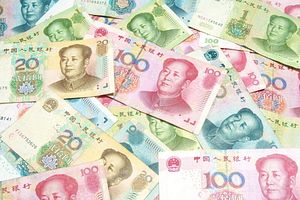On Thursday, China released a white paper on the foreign aid Beijing provides to other countries, a summary of which appeared on Xinhua. According to the white paper, from 2010-2012, China provided 89.34 billion RMB ($14.4 billion) in grants, interest-free loans, and concessional loans. Over half of that went to Africa, where 51 countries received Chinese aid (which is striking given that– depending on how one defines Africa and what territories one recognizes as independent nations– some sources count less than 50 nations are located on the African continent). Thirty Asian nations received around 30 percent of China’s foreign aid and 19 countries in Latin America and the Caribbean accounted for 8 percent. A plurality of China’s aid (44 percent) went to economic infrastructure projects, which the white paper defined as transport and communications, broadcasting and telecommunications, and power supply construction. The second largest spending category was social and public infrastructure (27 percent of the total aid), which includes the construction of schools, hospitals, and other civil construction.
In other news, Andranik Migranyan at The National Interest explores the possibility of a Russia-China alliance driven by Washington’s policies towards both countries. While many scholars have discussed this possibility (includingDingding Chen for The Diplomat) Migranyan deftly rebuts the common wisdom that Russia will never move too close to China for fear of being regulated to the role of a “junior partner.” He points out that the West has not proven any more willing to accept Russia on equal terms. Migranyan also dismisses the oft-heard claim that an influx of Chinese migrants into Siberia will threaten Russia’s control of its Far East—he notes that, in fact, the Chinese population near the Russian border is projected to decline as migrants move into central China and its large cities. With these myths dismissed, Migranyan argues U.S. policymakers should take more seriously the possibility that their actions will force China and Russia into a formal alliance.
Earlier this week, news broke of another alleged Chinese hacking attack, this one aimed at gathering personal information on U.S. federal employees. Politico speaks with security experts who note that this attack fits within the U.S. definition of cyber espionage for national security reasons. ““To me, this is traditional national security espionage through different means,” Matthew Rhoades, director of the Truman National Security Project’s Cyberspace and Security Program told Politico. That separates the latest cyber intrusion from the commercially-driven hacking attempts that the Obama administration has vehemently protested.
Over at the Wall Street Journal, the China Real Time blog explores the question of whether the U.S. scored a victory on Chinese currency appreciation at the Strategic and Economic Dialogue. As I noted earlier, this issue has reemerged just before the S&ED as a priority for the Obama administration. Afterward, Treasury Secretary Jack Lew said China would limit its intervention in the currency markets to “really extraordinary circumstances,” according to WSJ. But the article notes that, for China, the political concerns involved with promoting reform outweigh the economic benefits of a market-determined currency rate. Intervention in the value of the RMB is likely to continue whenever Beijing deems its politically necessary for short-term economic gain.
































